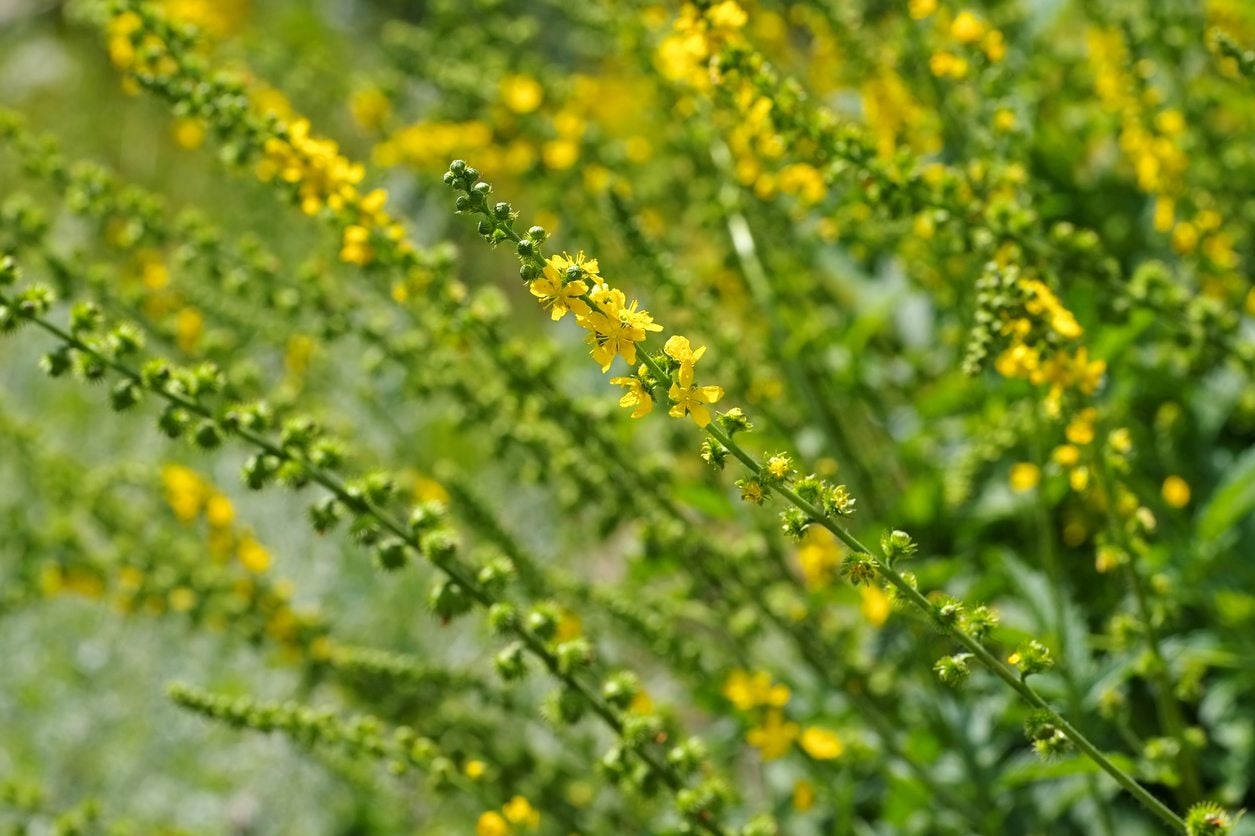Agrimony Plant Info: Learn How To Grow Agrimony Herbs


Agrimony (Agrimonia) is a perennial herb that has been tagged with a variety of interesting names over the centuries, including sticklewort, liverwort, church steeples, philanthropos and garclive. This ancient herb has a rich history and is valued to this day by herbalists around the world. Read on for more agrimony plant info, and learn how to grow agrimony herbs in your own garden.
Agrimony Plant Info
Agrimony belongs to the rose family, and the spikes of sweet-scented, bright yellow blooms are an attractive addition to the landscape. In days of yore, fabric was colored with dye created from the blooms.
Historically, agrimony herbs have been used to treat a variety of conditions, including insomnia, menstrual problems, diarrhea, sore throat, cough, snake bites, skin conditions, blood loss and jaundice.
According to various sources of plant folklore, witches used the agrimony herb in their spells to ward off curses. Homeowners, who believed the plant had magical qualities, relied on agrimony sachets to repel goblins and evil spirits.
Modern herbalists continue to utilize agrimony herbs as a blood tonic, digestive aid and astringent.
Agrimony Growing Conditions
Want to know how to grow agrimony in your garden? It’s easy. Agrimony herb plants grow in USDA plant hardiness zones 6 through 9. The plants thrive in full sunlight and most types of average, well-drained soil, including dry and alkaline soil.
Plant agrimony seeds directly in the garden after all danger of frost has passed in spring. You can also start seeds indoors a few weeks ahead of time, then transplant them to the garden when daytime temps are warm and seedlings are about 4 inches (10 cm.) tall. Allow at least 12 inches (30 cm.) between each seedling. Watch for seeds to germinate in 10 to 24 days. Plants are generally ready for harvest 90 to 130 days after planting.
Sign up for the Gardening Know How newsletter today and receive a free copy of our e-book "How to Grow Delicious Tomatoes".
Alternatively, you can propagate root cuttings from mature agrimony plants.
Agrimony Herb Care
Agrimony herbs don’t require a lot of attention. Just water lightly until the plants are established. Thereafter, water only when the soil is dry. Beware of overwatering, which can cause powdery mildew. Too much moisture can also result in root rot, which is nearly always deadly.
This is really all there is to agrimony herb care. Don’t bother with fertilizer; it isn’t necessary.

A Credentialed Garden Writer, Mary H. Dyer was with Gardening Know How in the very beginning, publishing articles as early as 2007.